Related Tags
“We want to offer something that can be passed through generations” Magma Amps’ John Szmidt on developing an amplifier for the modern era
The Bristolian manufacturer has developed an intriguing aesthetic that plays on modular design and a climate conscious ethos, resulting in elegant amplifiers that work equally well as pieces of furniture.
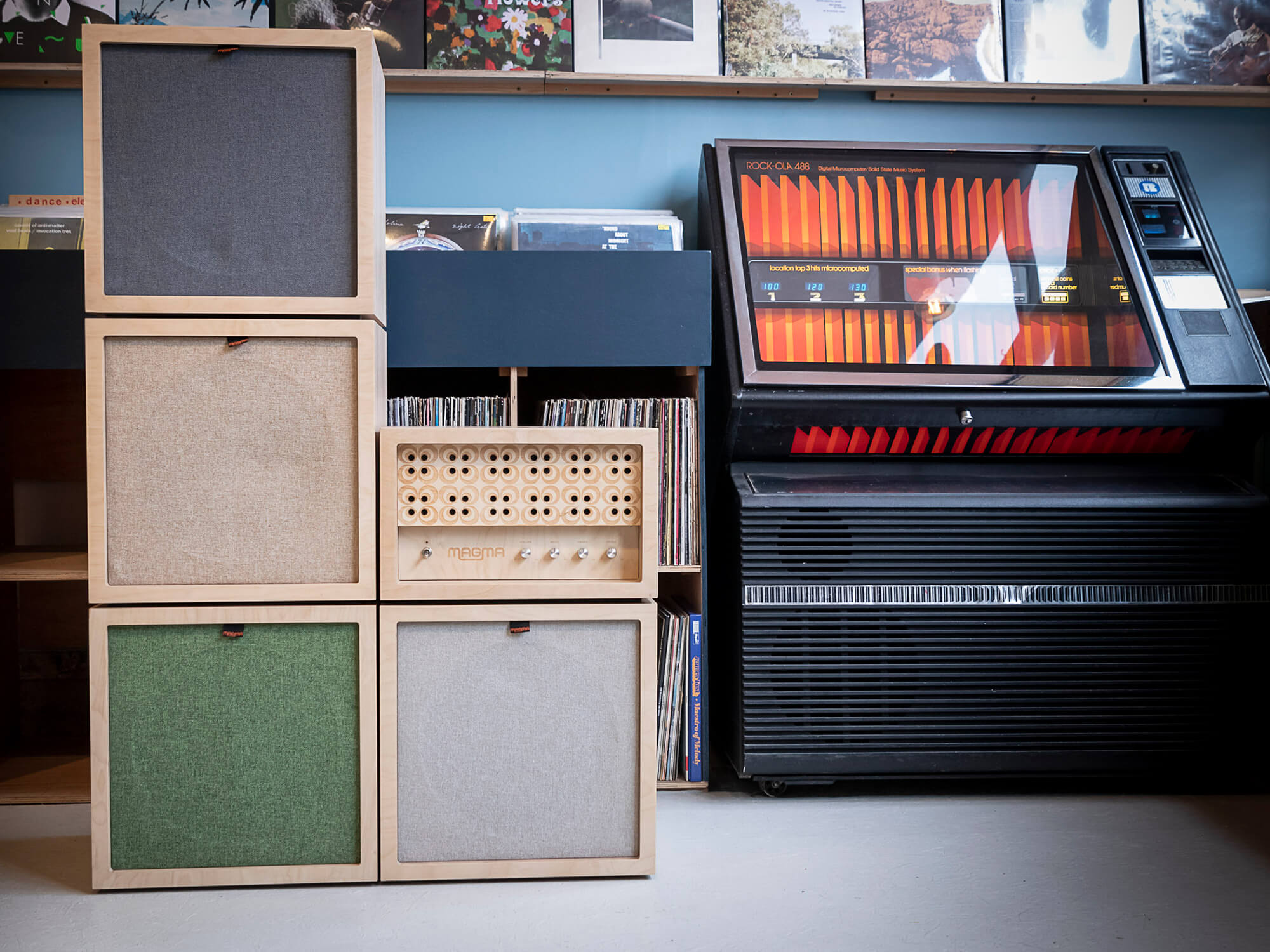
To begin with, why did you choose to create modular cabinets?
“The daisy chain system is a key part of our brand, we didn’t want to be limited by a solid block of speakers as a setup. We like offering people the ability to have speakers in different parts of a room, or positioning them in experimental ways in a recording studio situation. Loading different speakers into each cabinet also allows unique sounds to come at you, various Magma chambers erupting from all angles at the same time. The colour schemes also allowed for a level of customisation and accented changes in a product which is made up of standard parts. This comes from Lean manufacturing principles that we follow, based on optimising efficiency and limiting waste.”
“We are keen on lowering our carbon footprint. The process of construction and finishing is a labour of love. We wanted to celebrate this material and the element of craftsmanship by making it possible to have a rig in your house, creating a domestic guitar rig that you might not even know is there. There is a subtle elegance that we’d not really ever seen in this industry before. We wanted to tap into the market where people cared more about the stuff on display in their home. Real estate is expensive, at a prime and God isn’t making any more land, therefore people are living in tighter spaces where they may have more stuff on show, or nowhere to hide all their crap. People are becoming more aware and conscientious about the things they purchase, where they come from and how long they last. We want to offer something that can be passed through generations.”

You’ve also made a choice to ensure your amplifiers ‘nestle elegantly into the interior environment’. What inspired you to design them in this way?
“As we developed the speakers to be modular, we decided to standardise the sizing and allow the parts between products to be interchangeable. This limits the amount of components and confusion on the assembly line. It means that you can have an amp next to a speaker and not know the difference between them in a domestic setup. However if you look closely at the grills when the amp is on, you can see the light shining through, which is cool. Keeping it minimalist and hidden in plain sight. The idea initially came from working in the furniture industry, using stacked layers of plywood to create the edge grain effect, rather than a solid material surface. This lent itself to the simple geometry of a square. Using digital technology to limit waste and optimise the sheet material.”
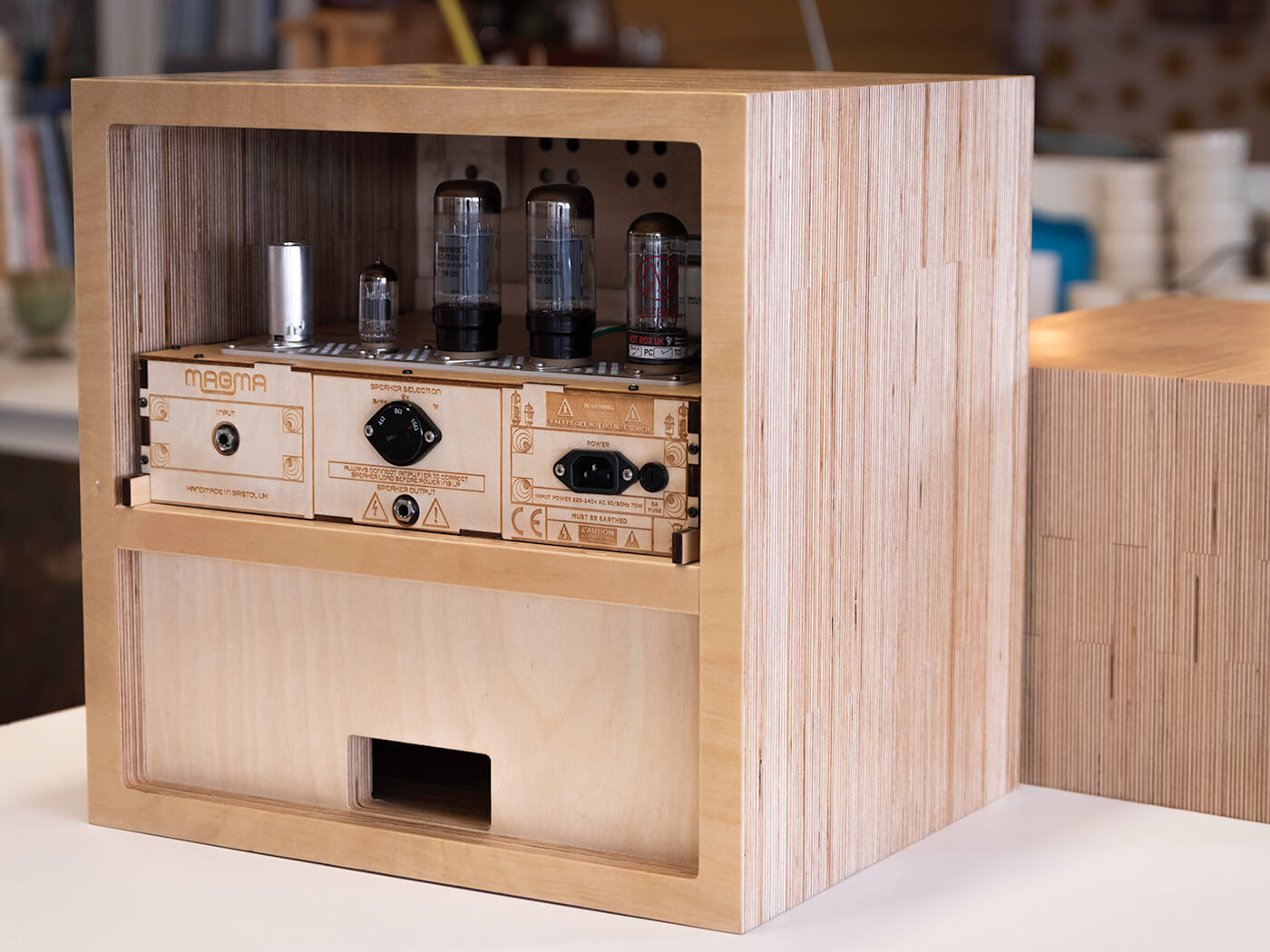
The Flow amplifier draws inspiration from single channel amplifiers of the early 60s. What can you tell us about the process of designing your own amps?
“The cabinets were originally designed and engineered back in 2012, the dimensions lend themselves neatly to fitting on a sheet of 24mm plywood. The brand and design language came out of the material, so we decided that these dimensions worked well all round. Again, drawing on lean manufacturing ideas to achieve a continuous flow and output. The name isn’t just about the movement of molten rock, it’s also related to the smoothness of a process driven design system.”
“Initially we only had the speaker cabinets, but made a conscious decision to work out an amplifier that would compliment all the aspects of the design. We’re also aware of the market and type of player we’re after, so the style of amp came out of that brief. We knew it needed to sound great to be viable, so many hours were spent researching the right approach and ingredients for this. We’re very happy with the result and so far the feedback has been very positive. Where would rock n roll be without a bit of feedback?”
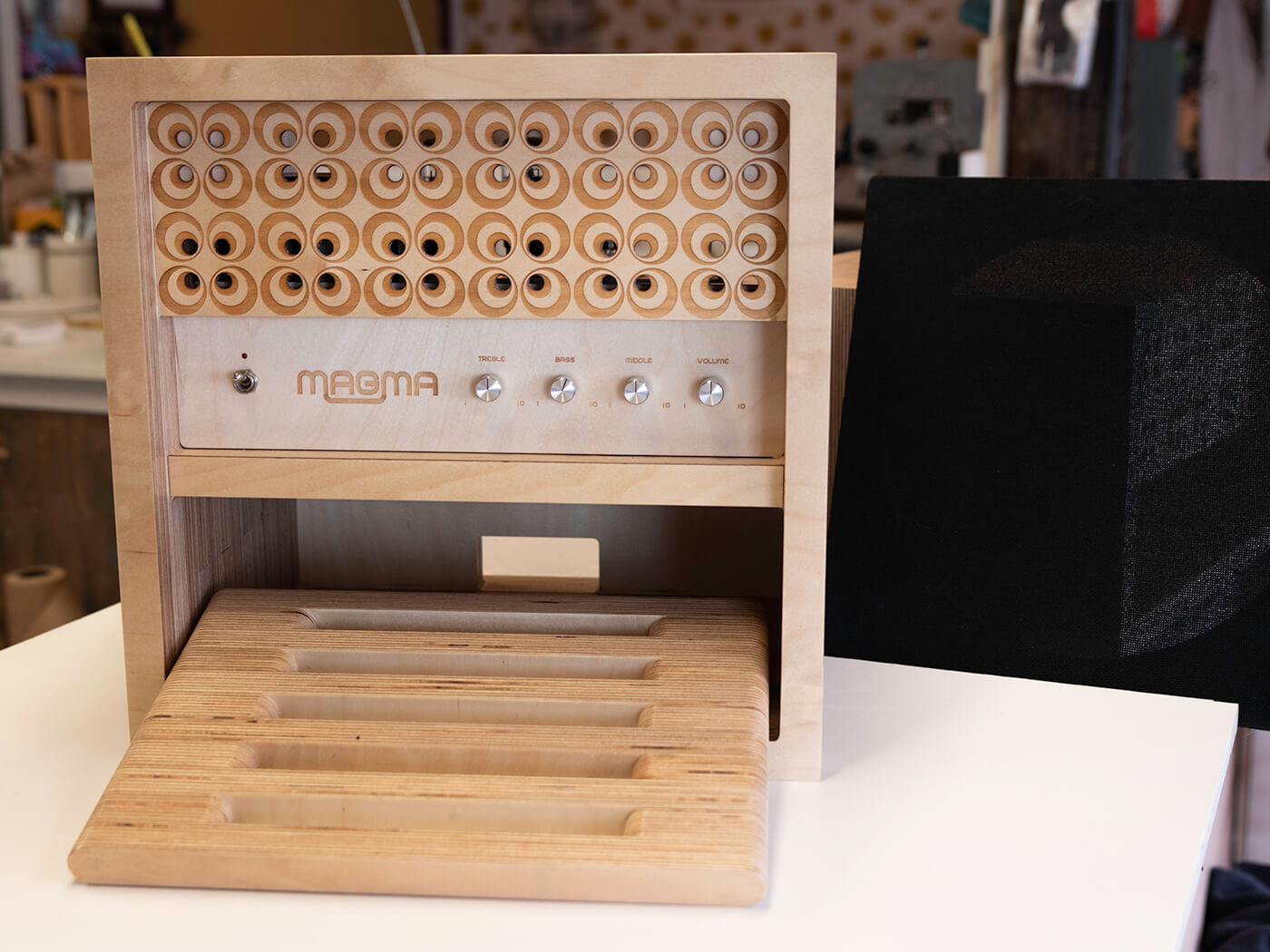
Interestingly, you also offer the Overflow, which houses a concealed pedalboard beneath the amplifier. Was there a demand for this feature from players or was it something that came from your R&D process?
“The Overflow is geared towards the same problem of having stuff on display in your home that doesn’t look in the way or slightly ominous. The term pedal platform was being used regularly to describe the amp as a single channel machine for expression. We took this term literally and created the platform/pedalboard that can be tucked away in location so nobody needs to know it’s there, except the player. You can dial in your tone and tuck it away once done or keep it out to switch pedals on and off when required. Essentially we want to solve these problems in one package.”
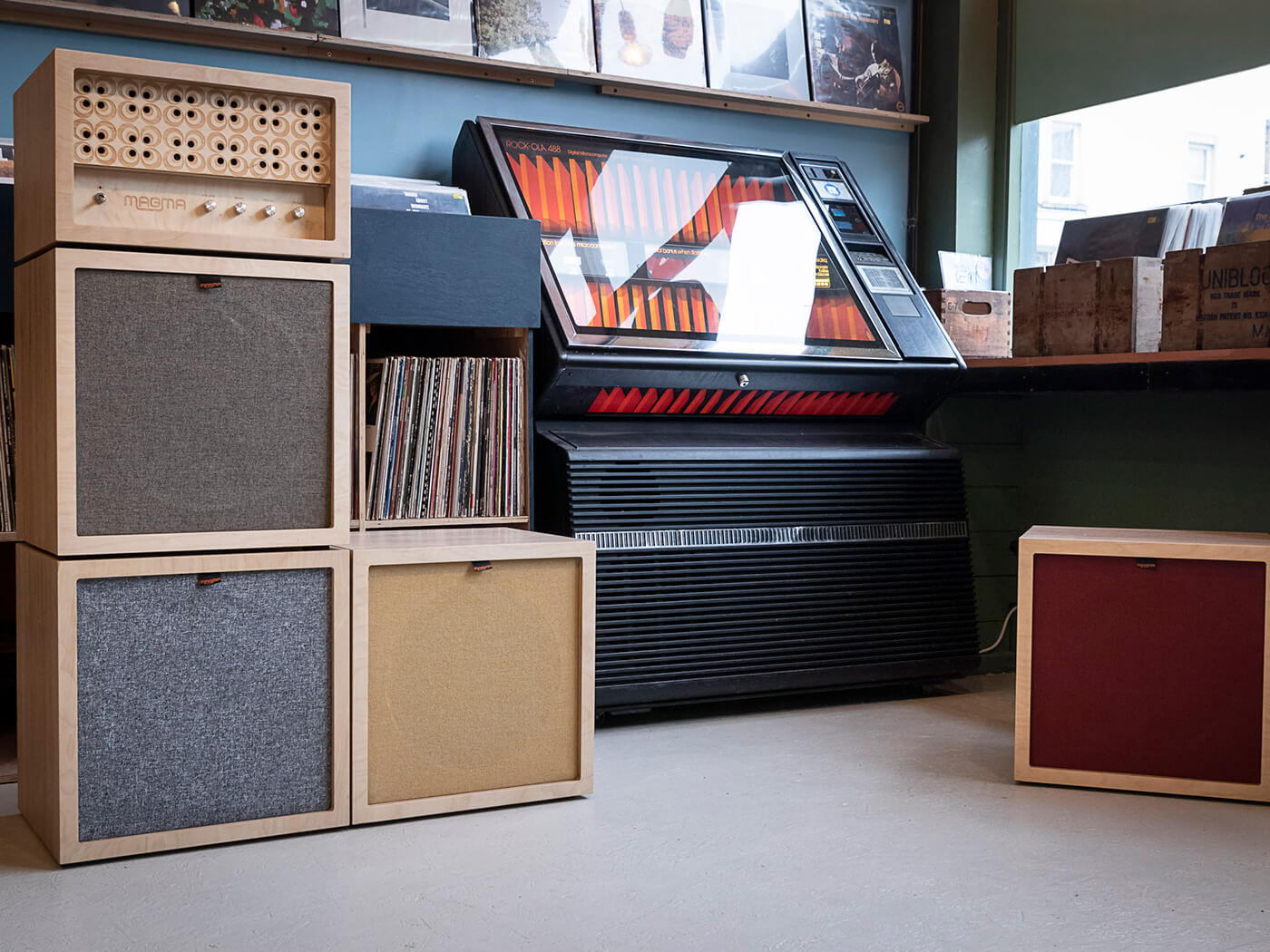
All of your products use FSC certified birch ply from local, UK-based sawmills. Why is it important to the guitar industry to use more ethical materials?
“We are conscious of our decisions as a company and need to be responsible for them. We feel sourcing and using local companies is important to grow an economy that is also considerate of these things. There may be too much emphasis on the exotic or speciality woods in the industry on some level. Again relating to the idea of standardisation, we know where our material comes from, there is a chain of custody.”
“This means that stock and supply can be monitored carefully, allowing us to carefully price and manage the fluctuations efficiently. We are trying to make our lives easier, so that life can be easier. With the current global happenings it’s certainly been tricky to navigate at times, but without a rigorous set of design, engineering and ethical principles in line, it could have been a lot harder. Coming at this from a design perspective, as much as a musical instruments angle, we’re aware of the future concerns and choice to use higher grade materials and components and are stringently avoiding any planned obsolescence.”
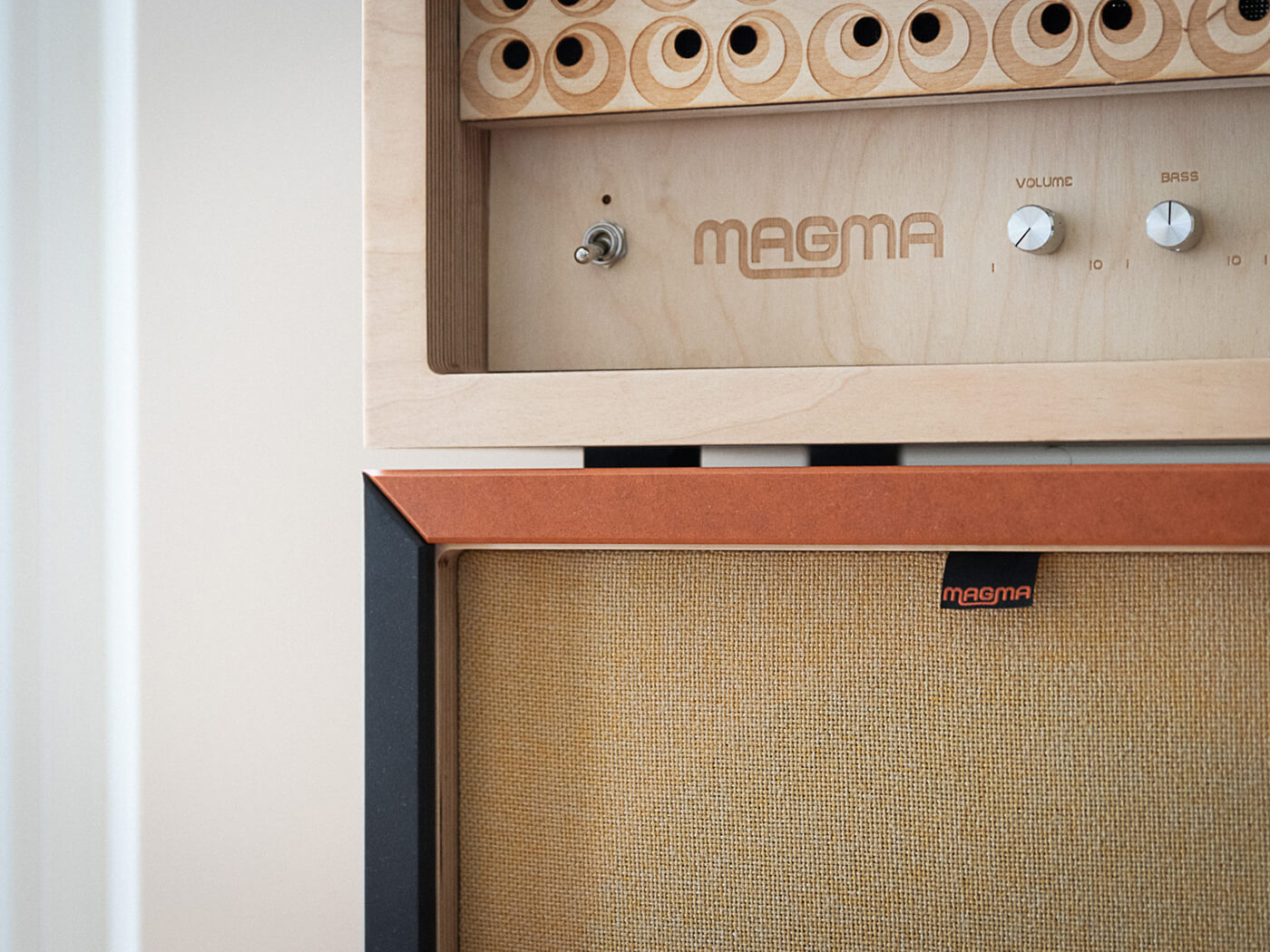
Given the considered aesthetic of Magma, when did you feel like you’d nailed your branding?
“Thank you for saying so. It’s been a collaborative effort. We met 20 years ago and have shared style and taste in music, design, aesthetics and many other aspects to our lives so the original concept just fell into place neatly. The 60s and 70s graphics come from that era of coolness that feels appropriate to celebrate.”
“The most challenging element is the process of being efficient. We had this idea of keeping it clean and minimalistic from the beginning, with limited branding. We’ve tried to let the design and aesthetics speak for themselves. Then use the amp and sound as an actual audible voice of the company. If we can set a rig up in a room and someone says ‘I want that, my partner will love you’ then we’ve done the job. It’s the reaction that is the most exciting thing, seeing people’s appreciation for something different, unique and cool. We had people tell us we’ve questioned what an amp actually is and deconstructed it to its raw form.”
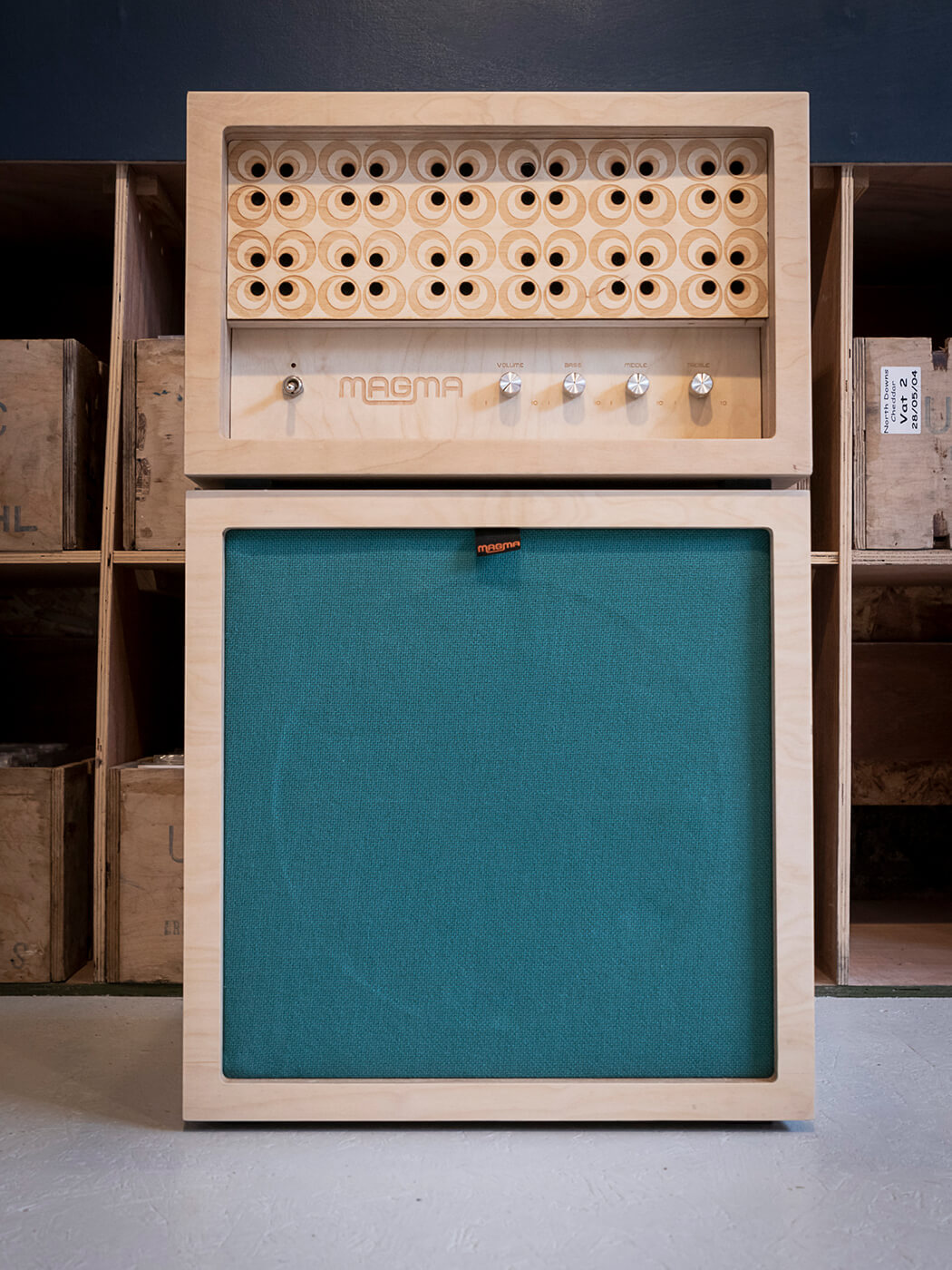
Did you have any external investment starting out?
“No, it’s all been self funded. As we work in the design/making industry we’ve been fortunate to have access to workshops and equipment out of hours to run tests, experiment and get the thing down the mountain.”
With recent appearances at UK trade shows and a fully realised product line, what’s next for Magma Amplification?
“Getting Billy F Gibbons to become a patron saint of Volcanic Amplification! We plan to launch a range of pedals, guitar stands and pedalboards with the same aesthetics. We are also working on a bass amp and speaker cab system. Scorching Summer 2022.”
Visit magmaamplification.com for more information.
